Celestial art: Annelie Solis' passion for geometry takes centre stage
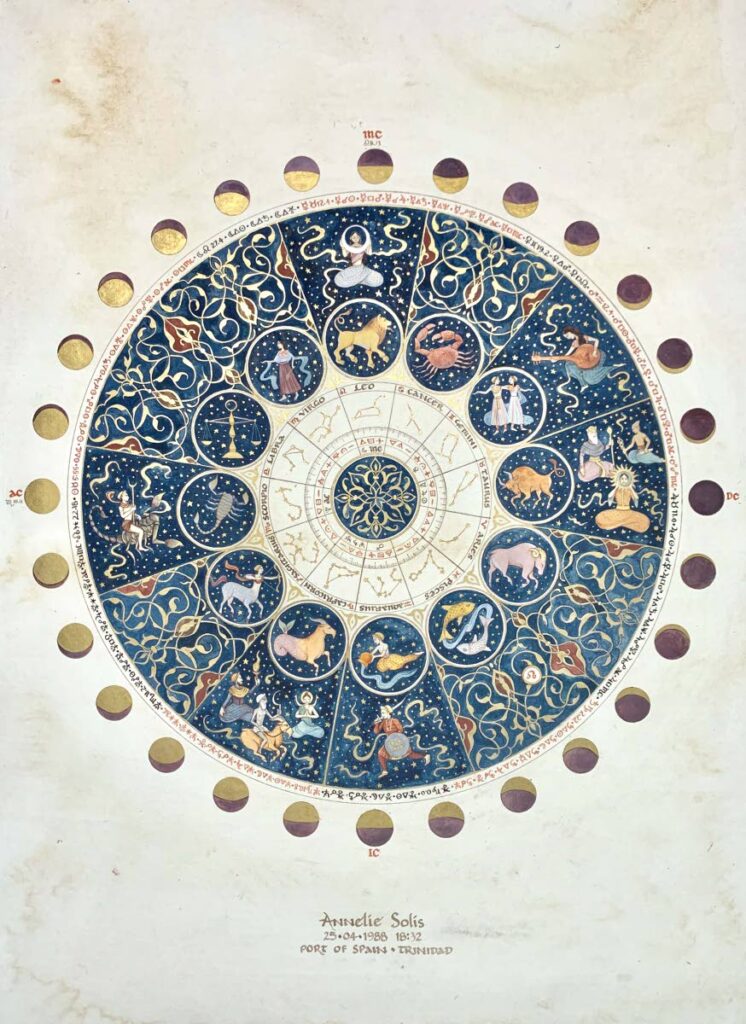
Annelie Solis defies any conventional description. It is tempting to call her an artist, but explorer suits her better.
She had a typical secondary-school education at Holy Name Convent in Trinidad, but forged her own creative path, honing her creativity at the Prince’s Foundation School of Traditional Arts in London.
Her art has no boundaries. From the stars and galaxies she explores in her paintings to the rocks beneath her feet that she gathers to create pigments for her hand-made paint, Solis creates her own unconventional path, much of which incorporates her passion for geometry.
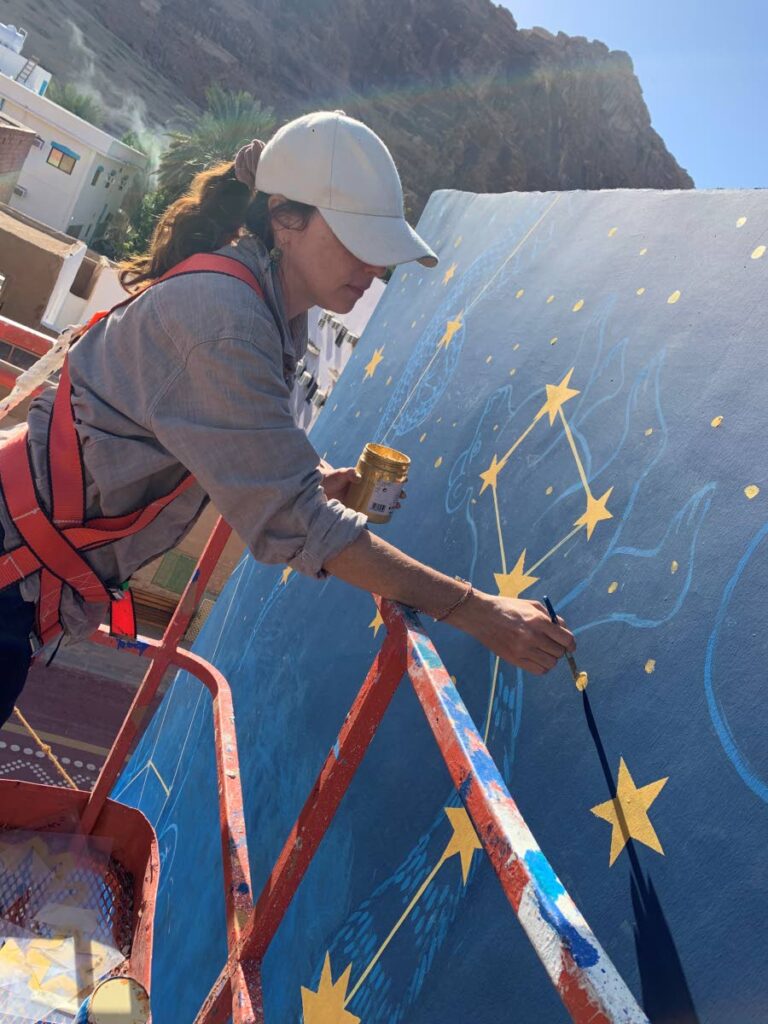
“In school, I was good in maths, and when I realised that, I liked it,” she said.
But the only A-level subject 35-year-old Solis did while attending secondary school was art.
“I didn’t want to do art because everyone said, ‘You have to do art,’ but then I realised I had to do art,” said Solis.
She means art was a calling she couldn’t escape – even after realising there was much more to it than was taught in school. On several occasions, Solis begins to speak of how much creativity is missing in a formal education, but stops herself from talking about the pitfalls of creativity measured by grades. A whimsical smile always propels her in a positive direction.
“I have been painting all my life. When I left secondary school, I was trying to find what my voice was.”
Yes, she believes art has a voice that speaks to our deepest, unspoken feelings.
For a time, Solis worked in Fine Arts, examined other painters’ work and reflected on the houses and tropical scenes they painted. She liked Martin Superville and Boscoe Holder’s paintings.
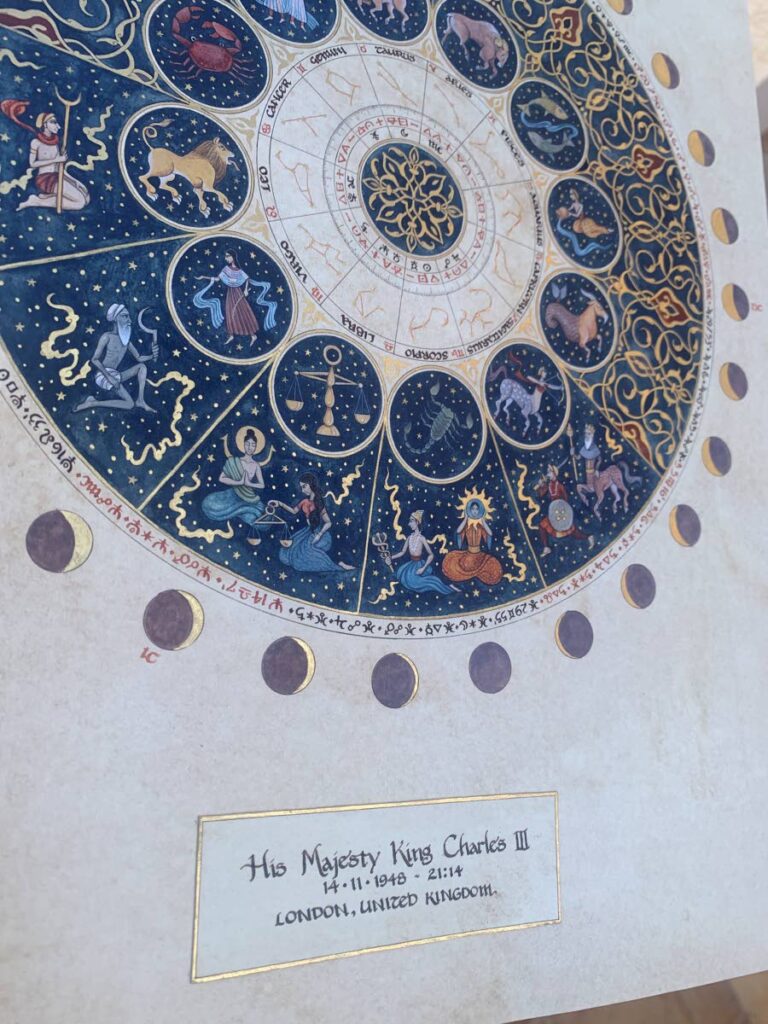
“I always loved faces and people. I like to express a theme or idea through a face rather than through an abstract idea. Even if you can’t name the feeling, you can connect with it.”
Unsure of what direction to go after secondary school, she chose photography.
“I had started to feel like I was painting things that weren’t my experiences here in Trinidad, so I stopped painting and did photography. I did fantastical-type photography, making scenes and creating costumes, but then realised I didn’t care that much about the technical aspects of photography. I just wanted to be creative.”
So she experimented with making jewellery.
“I need to create things with my hands using bold colours, shapes and the fantastical part of our cultures. This was up until I was 25.”
She always gravitated towards finding the deeper meaning in objects, and she describes that journey unpretentiously and with effervescent joy.
“For me, what I create is like my spiritual journey. I became interested in a multi-cultural way of looking at something such as the way divinity manifests itself across cultures. I wanted to deepen that knowledge. I was just doing it intuitively. I found I craved some ancient culture and tradition to draw from.”
That realisation led her to the Prince’s Foundation School, which she describes as “the most amazing place – a school that explores traditions from many cultures.”
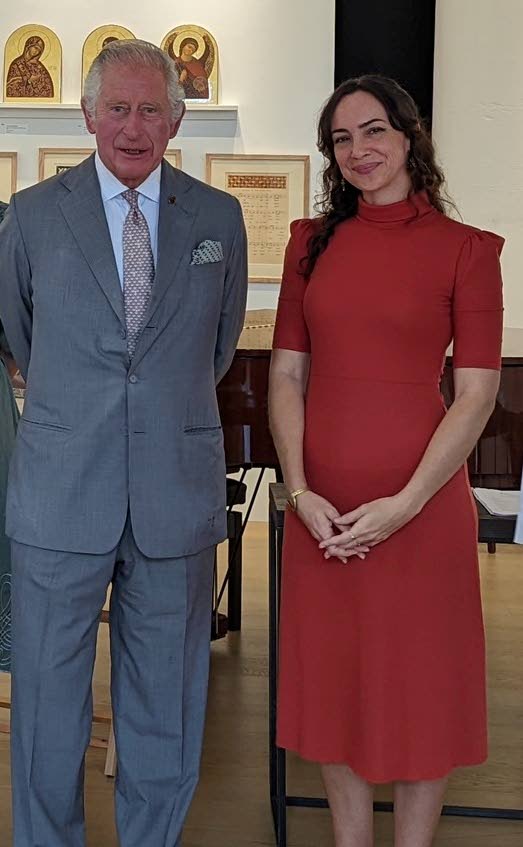
At this school, then under the patronage of Prince Charles, as he then was, she started with courses on Islamic cultures, geometry and arts and crafts traditions.
“The principles expressed through these traditional crafts are found in nature. The school brings cultural traditions together – mostly Eastern cultures."
She began with a course on icon painting – mostly Byzantine icons found in the eastern orthodox religious art that flourished in Constantinople (ancient Istanbul). Then she did a course on geometry in art. In 2018, she was accepted for an MA programme and plunged into studying Indian and Persian military painting and iconography. She delved into making her own pigments and paint, ceramics, ceramic painting and stained glass.
“Everything was underpinned with Islamic geometry,” she said.
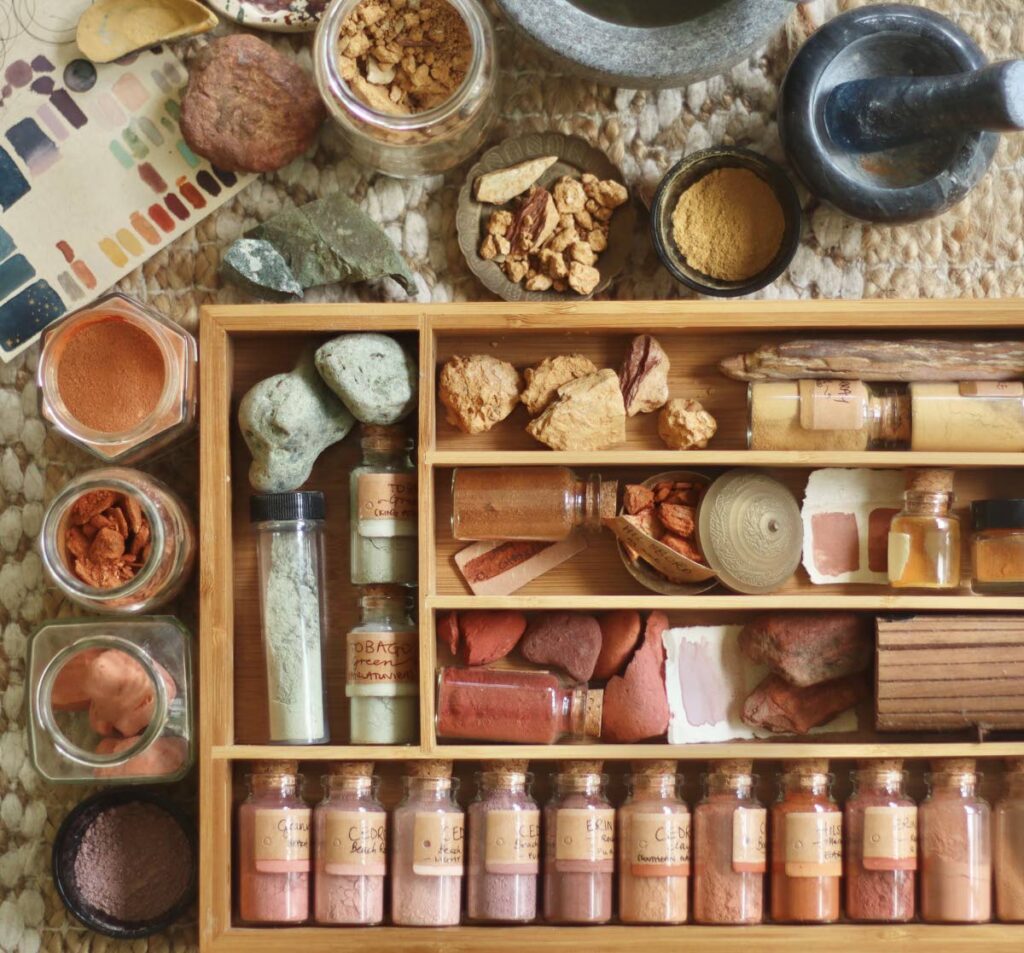
Another turning point came when Solis discovered Indian miniature painting, which means painting with fine details – not producing minuscule paintings.
“Before this, my painting was big and wild and intuitive. Now it was about planning important details. These paintings are so whimsical and meticulous. I love the way the process made me slow down and spend time with what I’m doing.”
Solis graduated with her MA in 2020 during the pandemic, when she was locked out of TT because of completely closed borders. Her class had no culminating art show, but the class of 2022 invited Solis’s class to participate in its degree show.
“So I got to go back to London.
"I can’t express how much I love that school. I love the whole traditional art community. I never felt like I was part of an art community until I went there. It was a supportive community with no competition.”
Along her creative journey, Solis mapped out a new route with cosmology (the study of the origins of the universe), astrology and astronomy.
“I love looking at the stars and how, through history, different cultures looked at the planets and the stars."
In January she got an opportunity to paint a mural in AlUla, a city in the Saudi Arabian desert where artists are invited to experience the landscape and then paint that experience.
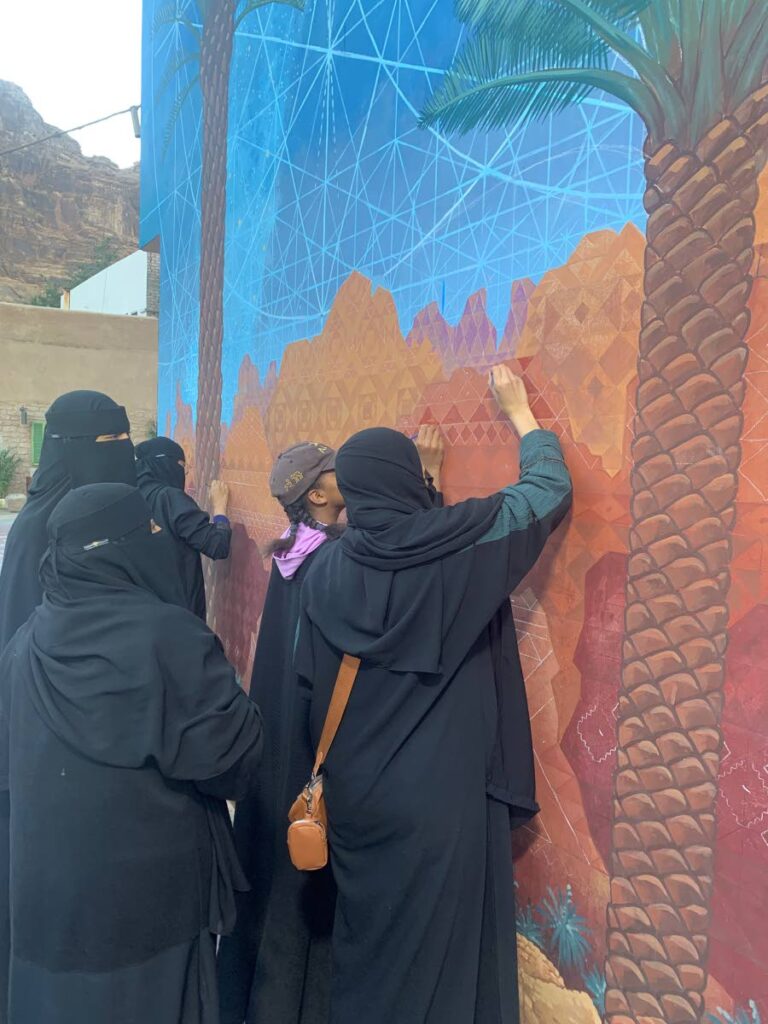
“It felt like I was flying to the moon. There’s a rocky orange desert. The town is in the middle of an oasis with endless beautiful palm trees. You fly into Jeddah or Riyadh to get there.
“At night the lights are dim and kept low to the ground so you can look up and see the stars. In AlUla they are proud of what they have and very excited to share it with the world.”
Solis got to paint her mural on the facade of a building.
The mural appears deceptively simple – the AlUla landscape with palm trees appears at the bottom. Everything is mapped out to be geometrically accurate. She included a geometric shape that squares a circle, with the square representing earth and the circle representing heaven. The square and the circle have the same perimeter and same circumference. Blue stars and a crescent moon top this vertical mural, and the constellations remain true to the geometrical shapes seen in the region.
Solis plunges into a complicated explanation of the mural that creates a new level of exuberance.
“A man who does star-gazing tours in AlUla asked me if I knew the moon was in the correct place, as it ties into the Greek and Islamic constellations, and that was so reaffirming to me.”
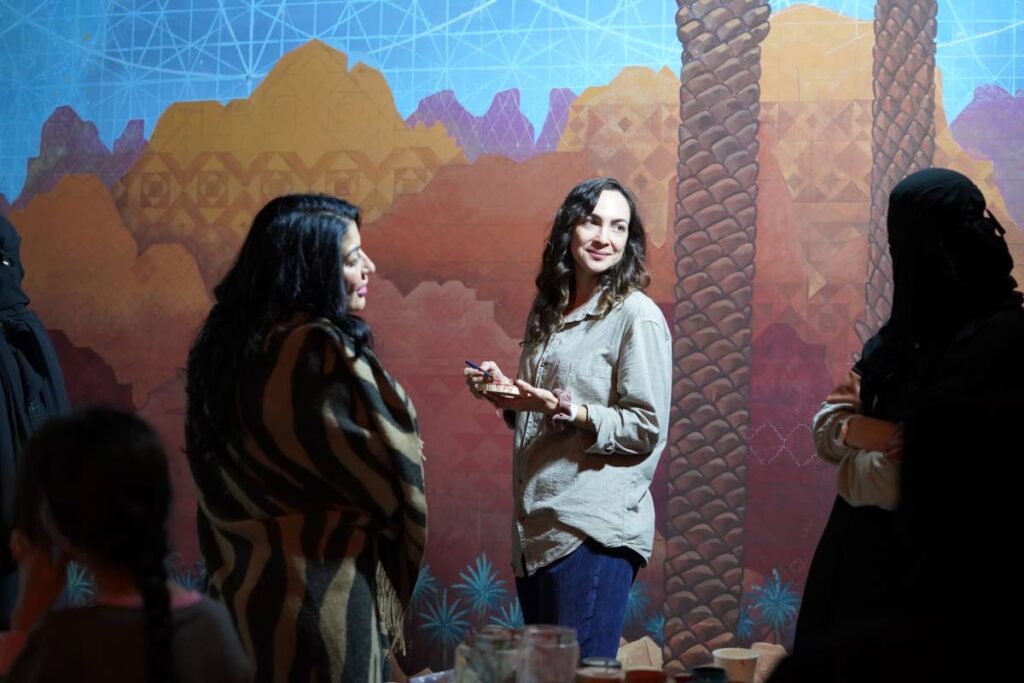
Come September, Solis will be moving to Valencia, Spain, where her fiance lives.
Where her art goes from here is up in the air.
“That remains to be seen. I feel like I might be in a dark-night period.”
Since last year she has been working on painting birth charts based on horoscopes by a 14th-century sultan. She did one for Prince Charles when he visited the school for its degree show. Two days after it was finished, he became King Charles.
Solis can’t escape from art. A hike means connecting to rocks and dirt she scoops up to create her own pigments.
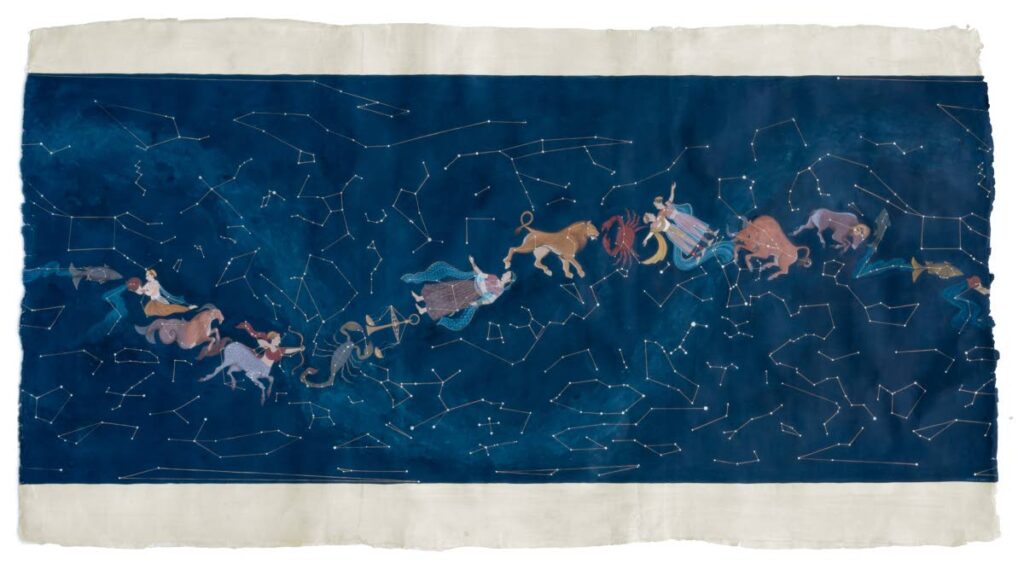
“I made some beautiful pigments: orange from the earth and red from cliff faces collected in Trinidad; white, light pink and purple collected in Tobago." She crushes rocks with a mortar and pestle,
mulls them on a muller slab
with a medium – like gum arabic (a binder). She has learned the process of growing and making her own indigo.
“When you make your own pigments, you become a co-creator with the earth.
"I used to paint with acrylic paints. I don’t feel like I will do that again. I love my paints because they are so imperfect. They have a life – some have large particles; some sparkle. Sometimes I am painting and I remember where I was when I collected the rocks or dirt with my sister and my dog.”
Solis says, “We think of this as a beautiful island, but there are colours beneath our feet that we don’t even realise.”
She has learned to appreciate life and art on a whole new level – and Solis attributes that to parents who encouraged her to be creative and never pressed her to conform to society’s idea of education. Looking up to the stars and looking down to the ground have been an education Solis never dreamed of. That journey will undoubtedly continue in Europe. Solis feels open to a whole new direction.


Comments
"Celestial art: Annelie Solis’ passion for geometry takes centre stage"